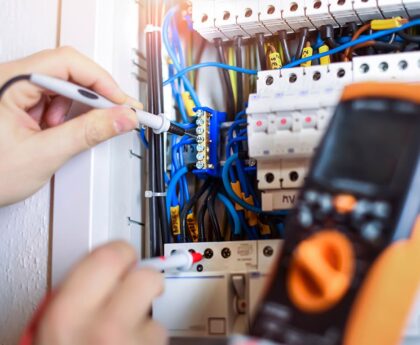The world of property development is seeing a significant shift and top subdivision developers are leading the charge. These trailblazers are redefining the landscape by emphasizing concepts traditionally considered outside the scope of their industry: sustainability and social responsibility.
This trend is more than just a buzzword—it’s a crucial pivot driven by the growing awareness about environmental conservation and social equity. As we dig deeper into this topic, we’ll better understand how subdivision development integrates sustainability and social responsibility and why it is an essential step towards healthier communities and a greener planet.
The Shift Towards Sustainability
A sustainable subdivision developer is someone who doesn’t just build homes but does so with a heart for preserving the planet. This can mean a variety of things, from integrating eco-friendly building materials to designing spaces that harmonize with the surrounding ecosystem.
Sustainable suburb development benefits not only the environment but also the homeowners. Living in homes that minimize waste, conserve energy, and reduce carbon footprints contribute significantly to a more sustainable lifestyle.
One notable technique used by top developers is incorporating green spaces into neighborhoods. These areas, filled with local flora, foster biodiversity and provide places for residents to unplug and connect with nature. Another strategy is building energy-efficient homes, equipped with the latest technology that conserves resources while still offering comfortable living conditions.
Successful implementation cases abound, inspiring other developers to do the same. For instance, impressive eco-friendly communities are emerging worldwide, showcasing smart design, renewable energy usage, and preserved green spaces—proof that sustainability and development can go hand in hand.
Emphasis on Social Responsibility
In the context of subdivision development, social responsibility refers to the commitment to creating neighborhoods that foster a positive social impact. This varies from providing safe, affordable housing to creating spaces that promote community building and enrichment.
Socially responsible developments can significantly improve the quality of life for homebuyers and the broader community. When developers prioritize safety, accessibility, and inclusivity in their projects, they contribute to more equitable and vibrant communities.
Leaders in the industry have begun to answer the call of social responsibility in exciting ways. For example, they’re creating child-friendly spaces within subdivisions, promoting a community atmosphere that values every inhabitant’s needs, balancing the need for privacy with common areas that ignite community interaction, and more. These initiatives underline the positive ripple effect that socially responsible subdivisions create—boosting social cohesion, enhancing security, and promoting a sense of belonging among residents.
The Intersection of Sustainability and Social Responsibility in Subdivision Development
The concepts of sustainability and social responsibility, when combined, forge a potent force for positive change in subdivision development. They’re like two sides of the same coin; sustainability ensures the environment is considered and protected, while social responsibility ensures the community thrives.
Top subdivision developers are demonstrating that these principles can effectively give birth to communities that not only respect the environment but also nurture social relations. One exemplary project is a subdivision that recycles rainwater for community-wide landscaping needs while offering affordable housing units in multiple sizes, thus promoting both environmental and social objectives.
The future of subdivision development lies in the fusion of these two principles, casting a hopeful, forward-looking perspective on constructing homes and communities with thoughtfulness and sensitivity, for both people and the planet.
Challenges of Implementing Sustainability and Social Responsibility
While the march towards sustainable and socially responsible subdivision development is inspiring, it’s not devoid of challenges. These can range from higher upfront costs associated with eco-friendly materials and technologies to potential resistance from traditionally-minded consumers or stakeholders.
However, forward-thinking developers are overcoming these obstacles through innovation and continued dialogue with their stakeholders. For instance, several strategies involve sourcing affordable, eco-friendly materials, and harnessing renewable resources to offset initial costs, while strong marketing and education efforts help people see the long-term benefits of living in sustainable, socially responsible communities.
In the end, the challenges faced are just stepping stones to a more revolutionary way of subdivision development, with a promise to change not just skylines, but lives too.
Key Takeaway
In conclusion, top subdivision developers are shifting towards emphasizing sustainability and social responsibility which gives an inspiring precedent in property development. Through merging environmental awareness and social equity in their projects, they are reshaping the future of housing one community at a time.
The combination of these principles makes a potent blueprint that can redefine success in this sector. With the growing urgency surrounding environmental issues and social discrepancies, a move towards more sustainable and inclusive subdivisions is more than just commendable—it’s necessary.
As the industry takes heed and continues its efforts, we can hope for neighborhoods that balance both human needs and respect for nature, truly underscoring the importance of these values in subdivision development. Building homes then becomes not just about providing shelter, but crafting communities where life thrives, and the planet thrives with it.



